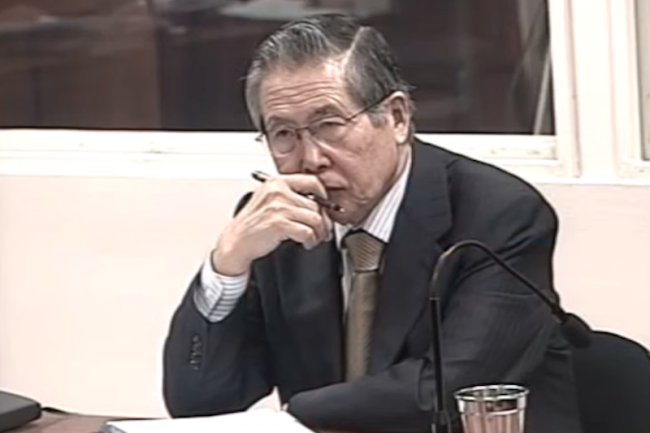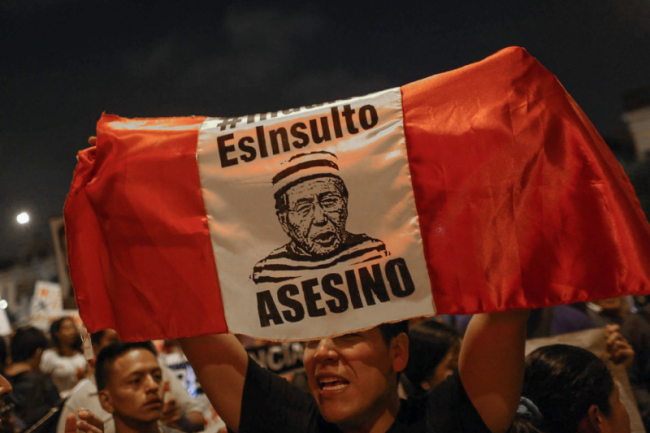
Alberto Fujimori is dead. The convicted architect and intellectual author of major human rights violations—including the infamous massacres at Barrios Altos and La Cantuta, a campaign of mass sterilizations targeting Indigenous women, the kidnapping of journalist Gustavo Gorriti and entrepreneur Samuel Dyer, and an unprecedented degree of public corruption—died a free man on September 11, 2024, following an illegal pardon. Sentenced in 2009 to 25 years in prison after a lengthy trial, Fujimori owed 57 million soles (about $15 million) in court-ordered financial reparations to the Peruvian state. More importantly, he held an immeasurable moral debt to the thousands of victims, survivors, and relatives affected by his authoritarian rule.
Democratically elected in 1990 while Peru teetered on the brink of institutional collapse due to economic hyperinflation, terrorism, and a militarized internal conflict, Fujimori’s electoral “tsunami” astonished both domestic and international observers, as well as Fujimori himself. After defeating the neoliberal candidate Mario Vargas Llosa, Fujimori adopted his electoral rival’s economic program. Despite promising otherwise during the presidential campaign, his administration implemented the quintessential formula of neoliberalism and “structural adjustments.” As his economic policies shrank the state, precarized the everyday lives of Peruvians, and expanded informal economies of survival, Fujimori contended that “traditional parties” were an obstacle to his efficiency, laying the groundwork for his authoritarian rule.
On the night of Sunday, April 5, 1992, Fujimori appeared on television and announced the establishment of a “Government of Emergency and National Reconstruction.” Blaming Congress and the judiciary for obstructing the “transformation and progress” of the nation, Fujimori declared the immediate dissolution of parliament and intervened in the national courts and other judicial institutions. Over the following hours, military and police forces occupied various state buildings, signaling the autocratic nature of what was to come. The autogolpe (self-coup), as April 5 came to be known, marked the formal beginning of Fujimori’s dictatorial turn.
Months before the autogolpe, in the neighborhood of Barrios Altos, just a few miles from downtown Lima and the Palace of Government, a major massacre shocked Lima and the rest of the country. Members of Grupo Colina, a paramilitary death squad, burst into a family party and, falsely accusing them of being terrorists and members of Sendero Luminoso, opened fire on 15 civilians, including an 8-year-old child. Both the public and state authorities demanded an investigation into the incident. All inquiries came to an abrupt halt on April 5.
After the autogolpe, the dirty war intensified, leading to illegal detentions and disappearances. On July 18, 1992, Grupo Colina arrested nine students and a faculty member from La Cantuta University in broad daylight. After interrogating and torturing them, the paramilitaries shot the students and clandestinely buried their bodies on the outskirts of Lima. The killings were revealed to the public nearly a year later, thanks to an Army whistleblower. The murder of the La Cantuta students inspired various amnesty proposals and policies of impunity seeking to shield the perpetrators, which further cemented the autocratic nature of Fujimori’s post-autogolpe regime.

Both the Barrios Altos and La Cantuta massacres are tragic examples of the widespread human rights atrocities and other crimes committed during Fujimori’s decade in power. They ultimately led to a major trial held in 2007. After stepping down from the presidency in 2000 following an unconstitutional reelection for a third term—and facing major social turmoil and proven accusations of political corruption—Fujimori fled Peru. He successfully sought asylum in Japan due to his dual citizenship and eluded authorities until his international arrest in Chile in 2005. After being extradited, his conviction marked the first time in Peru that any former elected head of state was sentenced to prison for crimes committed during their administration.
During the course of his imprisonment, Fujimori continued to be a major presence in Peru’s political and everyday life, both directly and indirectly. The many iterations of his political platform—Cambio 90, Cambio 95, and Cambio 2000—turned into Fujimorismo, a political force that fell on the lap of Keiko Fujimori, Alberto’s daughter, who served as his first lady after his divorce. At its core, Fujimorismo expresses the same disdain Fujimori had towards “traditional politics” and the political establishment.
In her own political career, Keiko has sought to complete her father’s dismantling of the democratic order and the rule of law. Serving in Congress (2006-2011) and running unsuccessfully for president three times in 2011, 2016, and 2021 on a platform of vindicating the historical “achievements” of Alberto’s regime, Keiko has fostered an unprecedented level of political, social, and cultural polarization in Peruvian society. At the heart of this polarization, Alberto’s anti-political legacy loomed large.
Over the more than three decades since Fujimori’s rise to power in 1990, Fujimorismo—both past and present—has ruled or played a major political role, based on several foundational premises. First, it views the state as a space for efficient economic management; therefore, its size and presence must yield to markets and corporate capital to maximize profits. Second, it considers political parties unnecessary and, in fact, as a historical burden to the nation's material progress. Third, it views civil society not as a space for political reflection, expression, and engagement; instead, civilians must be constantly reminded of their obligation to obey. Finally, it sees individuals or grassroots organizations that dissent as opposing progress and, thus, a danger to both themselves and others. Intertwined with these premises, clientelistic practices have fueled a culture of antidemocratic tendencies, violence, and corruption, transforming Keiko’s electoral vehicle Fuerza Popular—the last party-like iteration of Fujimorismo—into a mafia-like organization currently under legal investigation.
In 1995, the same year Alberto Fujimori’s fictions of progress earned him a landslide reelection, the Lima-based punk band Leusemia released a now mythical album titled A la mierda lo demás. The song “El asesino de la ilusión” subtly evoked the early years of political violence and, as Jo-Marie Burt has called it, the silencing of civil society as a power strategy wielded by 1990s Fujimorismo. “Las tardes de muertos eclipsan el bar, y los deudos callaran su rabia y todo es por tí. Pagando las noches de fusilamientos, gente desaparecerá. ¿En dónde están?” they sing. “Afternoons of the dead eclipse the bar, and the relatives will silence their anger and everything is because of you. Paying for the shooting nights, people will disappear. Where are they?”
The Fujimoris, Alberto and Keiko, paralleled other histories of dynastic and despotic rulers in the world. Alberto’s rule killed people and their illusions, imposing death and fear as a weapon of social discipline. Amid rumors of a 2026 “family presidential ticket” with Alberto as the presidential candidate, his death leaves Keiko as the sole inheritor and wielder of a gruesome legacy of state terror, human rights violations, and the dismantling of democracy. The judgment of Alberto’s lost decade now belongs to history and to the collective memory of all Peruvians. Other battles, political and cultural, lie ahead. So does restoring the illusions and collective hope of having a country and a nation despite Fujimori.
Javier Puente is a scholar of Andean peoples and places. He is author of The Rural State and currently serves as Associate Professor and Chair of the Latin American and Latino/a Studies program and Faculty Liaison of the Lewis Global Studies Center at Smith College. He is a member of NACLA’s Editorial Committee.

